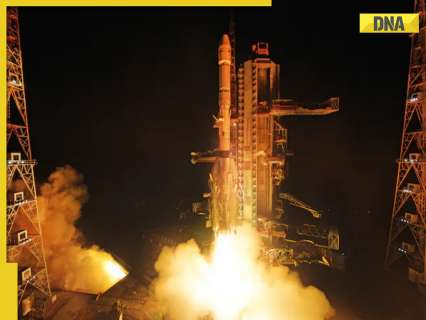
ISRO explained in a statement that a technical problem with the satellite has stopped the process of moving it to its intended orbit.
The Indian Space Research Organisation (ISRO) announced on Sunday, February 2, that its NVS-02 navigation satellite, launched on January 29 aboard the GSLV-F15 rocket, has encountered a technical issue. Notably, this launch marked ISRO’s 100th successful mission.
ISRO explained in a statement that a technical problem with the satellite has stopped the process of moving it to its intended orbit. This process, called “orbit raising maneuvers,” is what helps the satellite reach its final position in space after being launched.
After the satellite was launched, its solar panels were successfully opened, and they are working properly to generate power as expected.
ISRO confirmed that they have established communication with the satellite from the ground station. However, they were unable to move the satellite to its intended orbit because the valves, which are responsible for allowing a chemical (called oxidizer) to flow into the thrusters and power them, did not open. These thrusters are like small engines that help push the satellite into its final position in space. Without the oxidizer reaching the thrusters, the satellite couldn’t move to its planned orbit.
Sources in ISRO revealed that the satellite couldn’t activate its thrusters after reaching orbit. As a result, it wasn’t able to move to its intended position in space.
ISRO stated that the satellite’s systems are in good condition, and it is currently in an elliptical orbit (an oval-shaped path around Earth). The satellite was designed for navigation purposes, and the team is now exploring alternative ways to use it for navigation while it stays in this orbit.
An ISRO official involved in the satellite program said that the Master Control Facility in Hassan, Karnataka, is handling the situation with the satellite. Another official added that they are continuing with the planned activities for the satellite.
Since ISRO has not reported any orbit adjustments for the NVS-02 satellite, which was launched four days ago, there has been speculation that the satellite may be facing technical issues.
ISRO announced that the NVS-02 navigation satellite was successfully placed into its planned Geosynchronous Transfer Orbit, which is the first step before it moves to its final position in space.
Data from an open-source space app that tracks satellites shows that the NVS-02 satellite is still in the same spot where it was placed in the Geosynchronous Transfer Orbit (GTO) on January 29. Usually, ISRO would use the satellite’s engines to gradually move it into its final position in a geostationary orbit at 111.75 degrees east, over India, where it is meant to replace the IRNSS-1E satellite.
Before the launch, ISRO mentioned that the NVS-02 satellite is equipped with a combination of indigenous and imported atomic clocks to ensure precise time measurement.
The satellite was initially intended to be placed in an elliptical orbit around Earth, with its farthest point (apogee) at 37,500 km and its closest point (perigee) at 170 km. On January 29, the GSLV rocket successfully launched the satellite into an orbit that was very close to these targets. The achieved orbit was just 74 km off from the intended apogee and only 0.5 km off from the intended perigee, as reported by the Indian Express.
The NVS-02 satellite is equipped with navigation systems that work on L1, L5, and S frequency bands. It also has a ranging system that operates on the C-band, similar to the earlier satellite, NVS-01. These systems help the satellite provide accurate navigation and positioning information.
The NVS-02 is the second satellite in a series of five second-generation navigation satellites. The first satellite in this series was launched in 2023.
(The author of this article is a Defence, Aerospace & Political Analyst based in Bengaluru. He is also Director of ADD Engineering Components, India, Pvt. Ltd, a subsidiary of ADD Engineering GmbH, Germany. You can reach him at: girishlinganna@gmail.com)
(Disclaimer: The views expressed above are the author’s own and do not reflect those of DNA)





